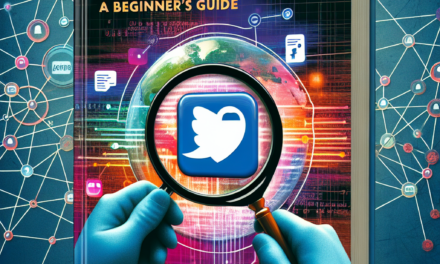Epic and Particle Health Clash Over Data Exchange Dispute

The healthcare industry is undergoing a digital transformation, with data exchange playing a pivotal role in improving patient care and operational efficiency. However, this transformation is not without its challenges, as evidenced by the recent dispute between Epic Systems and Particle Health. This article delves into the intricacies of this clash, exploring the implications for the healthcare sector, the role of data exchange, and the potential outcomes of this conflict.
Understanding the Epic and Particle Health Dispute
The dispute between Epic Systems, a leading electronic health record (EHR) provider, and Particle Health, a health data exchange platform, has captured the attention of the healthcare industry. At the heart of the conflict is the issue of data interoperability and access, which are crucial for seamless healthcare delivery.
Epic Systems, known for its comprehensive EHR solutions, has been criticized for its closed data ecosystem. This approach has often been at odds with the growing demand for open data exchange, which is where Particle Health comes into play. Particle Health advocates for a more open and accessible data exchange system, enabling healthcare providers to access patient data from various sources seamlessly.
The clash between these two entities highlights the broader challenges faced by the healthcare industry in achieving true interoperability. As healthcare providers strive to deliver better patient outcomes, the ability to access and share data across different platforms becomes increasingly important.
The Role of Data Interoperability in Healthcare
Data interoperability is a critical component of modern healthcare systems. It refers to the ability of different information systems, devices, and applications to access, exchange, integrate, and cooperatively use data in a coordinated manner. This capability is essential for providing comprehensive patient care and improving healthcare outcomes.
Interoperability allows healthcare providers to access a patient’s complete medical history, regardless of where the data was originally recorded. This holistic view of patient data can lead to more accurate diagnoses, personalized treatment plans, and improved patient safety. Moreover, it reduces the risk of redundant tests and procedures, ultimately lowering healthcare costs.
Despite its importance, achieving interoperability remains a significant challenge. The healthcare industry is characterized by a multitude of disparate systems, each with its own data standards and protocols. This lack of standardization hinders the seamless exchange of information, leading to inefficiencies and potential errors in patient care.
Epic Systems: A Leader in EHR Solutions
Epic Systems is one of the largest and most influential EHR providers in the world. Founded in 1979, the company has established itself as a leader in the healthcare technology space, serving a wide range of healthcare organizations, from small clinics to large hospital systems.
Epic’s EHR solutions are known for their comprehensive features, including patient scheduling, billing, and clinical documentation. The company’s software is used by some of the most prestigious healthcare institutions globally, making it a dominant player in the market.
However, Epic’s success has not been without controversy. The company’s closed data ecosystem has been a point of contention, with critics arguing that it limits data exchange and interoperability. Epic has defended its approach, citing concerns over data security and patient privacy. Nevertheless, the demand for more open data exchange continues to grow, putting pressure on Epic to adapt to the changing landscape.
Particle Health: Championing Open Data Exchange
Particle Health is a relatively new player in the healthcare technology space, but it has quickly gained attention for its innovative approach to data exchange. Founded in 2018, the company aims to simplify the process of accessing and sharing healthcare data across different platforms.
Particle Health’s platform aggregates data from various sources, including EHRs, labs, and pharmacies, providing healthcare providers with a comprehensive view of a patient’s medical history. This approach aligns with the industry’s push towards interoperability and open data exchange.
The company’s mission is to break down the barriers to data access, enabling healthcare providers to deliver better patient care. By advocating for open data exchange, Particle Health challenges the status quo and pushes for a more connected healthcare ecosystem.
The Implications of the Dispute for the Healthcare Industry
The clash between Epic Systems and Particle Health has significant implications for the healthcare industry. At its core, the dispute highlights the ongoing struggle to balance data security and privacy with the need for open data exchange.
For healthcare providers, the ability to access and share data seamlessly is crucial for delivering high-quality care. However, this must be balanced with the need to protect patient information from unauthorized access and breaches. The dispute underscores the importance of finding a middle ground that addresses both concerns.
Moreover, the outcome of this conflict could set a precedent for how data exchange is handled in the future. If Particle Health’s approach gains traction, it could lead to a shift towards more open and interoperable systems. Conversely, if Epic’s closed ecosystem prevails, it may reinforce the status quo and slow down the progress towards interoperability.
The Importance of Data Exchange in Modern Healthcare
Data exchange is a cornerstone of modern healthcare, enabling providers to access critical information and make informed decisions. The ability to share data across different platforms and systems is essential for delivering comprehensive patient care and improving healthcare outcomes.
In recent years, there has been a growing emphasis on the importance of data exchange in healthcare. This shift is driven by several factors, including the increasing complexity of patient care, the rise of value-based care models, and the need for more efficient healthcare delivery.
Enhancing Patient Care Through Data Exchange
One of the primary benefits of data exchange is its ability to enhance patient care. By providing healthcare providers with access to a patient’s complete medical history, data exchange enables more accurate diagnoses and personalized treatment plans.
For example, consider a patient with a chronic condition who visits multiple specialists. Without data exchange, each provider may only have access to a limited set of information, leading to fragmented care. However, with seamless data exchange, all providers can access the same comprehensive data, ensuring coordinated and effective treatment.
Moreover, data exchange reduces the risk of redundant tests and procedures. When providers have access to a patient’s complete medical history, they can avoid ordering unnecessary tests, saving time and resources while minimizing patient discomfort.
Supporting Value-Based Care Models
Data exchange is also critical for supporting value-based care models, which focus on delivering high-quality care while controlling costs. These models rely on data-driven insights to identify opportunities for improvement and measure outcomes.
By facilitating data exchange, healthcare providers can access the information needed to evaluate the effectiveness of treatments and interventions. This data-driven approach enables providers to identify best practices, optimize care delivery, and improve patient outcomes.
Furthermore, data exchange supports population health management by providing insights into the health needs of specific populations. This information can be used to develop targeted interventions and preventive measures, ultimately improving the overall health of communities.
Challenges in Achieving Seamless Data Exchange
Despite its importance, achieving seamless data exchange in healthcare is fraught with challenges. One of the primary obstacles is the lack of standardization across different systems and platforms.
The healthcare industry is characterized by a multitude of disparate systems, each with its own data standards and protocols. This lack of standardization hinders the seamless exchange of information, leading to inefficiencies and potential errors in patient care.
Additionally, concerns over data security and patient privacy pose significant challenges. Healthcare providers must ensure that data is exchanged securely and that patient information is protected from unauthorized access and breaches.
To address these challenges, industry stakeholders must work together to develop and implement standardized data exchange protocols. This collaborative approach is essential for achieving true interoperability and realizing the full potential of data exchange in healthcare.
Case Studies: Successful Data Exchange Initiatives
While the challenges of data exchange are significant, there are several successful initiatives that demonstrate the potential benefits of seamless data exchange in healthcare. These case studies provide valuable insights into how data exchange can improve patient care and operational efficiency.
Case Study 1: The Indiana Health Information Exchange
The Indiana Health Information Exchange (IHIE) is one of the largest and most successful health information exchanges in the United States. Established in 2004, IHIE connects over 100 hospitals and thousands of healthcare providers across Indiana, facilitating the exchange of patient data.
IHIE’s success is attributed to its robust infrastructure and commitment to interoperability. The exchange uses standardized data formats and protocols, ensuring that information can be seamlessly shared across different systems.
As a result, IHIE has improved care coordination and reduced redundant tests and procedures. Healthcare providers can access a patient’s complete medical history, leading to more accurate diagnoses and personalized treatment plans.
Case Study 2: The Veterans Health Information Exchange
The Veterans Health Information Exchange (VHIE) is another successful example of data exchange in healthcare. Operated by the U.S. Department of Veterans Affairs (VA), VHIE enables the secure exchange of health information between VA facilities and external healthcare providers.
VHIE’s success is driven by its focus on patient-centered care. The exchange allows veterans to share their health information with non-VA providers, ensuring that all members of their care team have access to the same comprehensive data.
This approach has improved care coordination and enhanced patient safety. Veterans receive more consistent and effective care, regardless of where they seek treatment.
Case Study 3: The Sequoia Project
The Sequoia Project is a non-profit organization that promotes nationwide health information exchange. Through its initiatives, such as the eHealth Exchange and Carequality, the Sequoia Project has facilitated the exchange of health information across different systems and platforms.
The eHealth Exchange is one of the largest health information networks in the United States, connecting federal agencies, healthcare providers, and health information exchanges. This network enables the secure exchange of patient data, improving care coordination and patient outcomes.
Carequality, another initiative of the Sequoia Project, provides a framework for interoperability across different health information networks. By establishing common standards and protocols, Carequality enables seamless data exchange, regardless of the systems used by healthcare providers.
The Future of Data Exchange in Healthcare
The future of data exchange in healthcare is promising, with advancements in technology and policy driving progress towards interoperability. As the industry continues to evolve, several trends are shaping the future of data exchange.
Advancements in Technology
Technological advancements are playing a crucial role in improving data exchange in healthcare. Innovations such as cloud computing, artificial intelligence, and blockchain are enhancing the ability to share and analyze data securely and efficiently.
Cloud computing enables healthcare providers to store and access data from anywhere, facilitating seamless data exchange across different locations. This technology also supports scalability, allowing providers to handle large volumes of data without compromising performance.
Artificial intelligence (AI) is transforming data exchange by enabling advanced data analytics and insights. AI algorithms can analyze vast amounts of data quickly, identifying patterns and trends that can inform clinical decision-making and improve patient outcomes.
Blockchain technology offers a secure and transparent way to exchange data, ensuring that patient information is protected from unauthorized access and breaches. By providing a decentralized and tamper-proof ledger, blockchain enhances data security and trust in data exchange.
Policy and Regulatory Developments
Policy and regulatory developments are also driving progress towards interoperability and data exchange in healthcare. Initiatives such as the 21st Century Cures Act and the Trusted Exchange Framework and Common Agreement (TEFCA) are promoting standardized data exchange and interoperability.
The 21st Century Cures Act, enacted in 2016, aims to accelerate medical innovation and improve patient access to health information. The act includes provisions for promoting interoperability and preventing information blocking, ensuring that patients and providers can access and share data seamlessly.
TEFCA, developed by the Office of the National Coordinator for Health Information Technology (ONC), provides a framework for nationwide health information exchange. By establishing common standards and protocols, TEFCA aims to facilitate seamless data exchange across different systems and networks.
The Role of Industry Collaboration
Industry collaboration is essential for achieving true interoperability and realizing the full potential of data exchange in healthcare. Stakeholders, including healthcare providers, technology vendors, and policymakers, must work together to develop and implement standardized data exchange protocols.
Collaborative initiatives, such as the CommonWell Health Alliance and the Carequality Interoperability Framework, demonstrate the power of industry collaboration in advancing data exchange. These initiatives bring together diverse stakeholders to develop common standards and promote interoperability across different systems.
By fostering collaboration and cooperation, the healthcare industry can overcome the challenges of data exchange and create a more connected and efficient healthcare ecosystem.
Conclusion: Navigating the Path to Interoperability
The dispute between Epic Systems and Particle Health underscores the complexities and challenges of achieving data interoperability in healthcare. As the industry continues to evolve, the ability to access and share data seamlessly will be crucial for delivering high-quality patient care and improving healthcare outcomes.
While the path to interoperability is fraught with challenges, advancements in technology, policy developments, and industry collaboration offer promising solutions. By working together, stakeholders can overcome the barriers to data exchange and create a more connected and efficient healthcare ecosystem.
Ultimately, the future of data exchange in healthcare depends on finding a balance between data security and privacy and the need for open and accessible data. By navigating this path thoughtfully and collaboratively, the healthcare industry can unlock the full potential of data exchange and transform patient care for the better.





